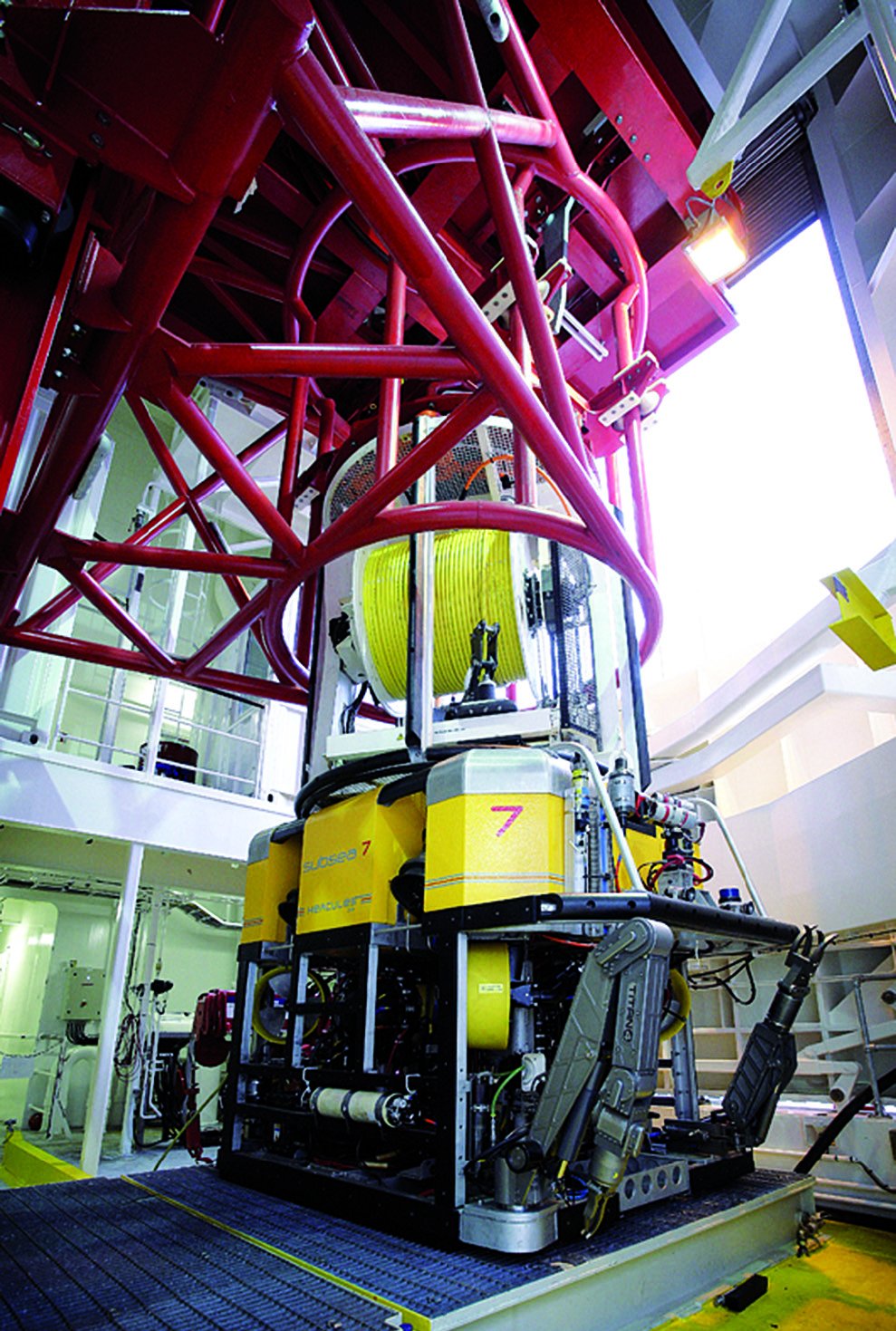

Remotely-operated vehicle (ROV)
Tethered underwater robot. ROVs are common in deepwater industries. They became essential in the 1980s when the depth of many offshore projects excluded the use of divers. ROVs now carry an extensive range of measurement and monitoring instruments in addition to the tools, lights and cameras required to perform a wide variety of underwater tasks. These range from the routine inspection of subsea structures, pipelines and platforms to connecting pipelines and positioning underwater components.
Buoyancy is provided by a large flotation pack located at the top of a rigid steel or alloy chassis. Heavy items of equipment are placed near the bottom of the vehicle, cameras, lights and manipulators are located at the front.
Thrusters are provided in all three axes to maximize manoeuvrability, and electrical cables are often run inside oil-filled tubes to avoid corrosion. The construction of Work Class ROVs is generally heavier than Observation Class (eyeball) ROVs, and they can often operate at greater depths.
